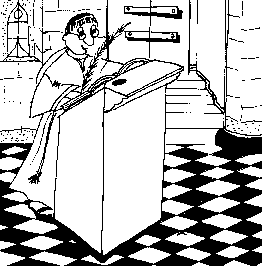Information & Design
Designing for humans
Designing for humans

Usability activities can be ineffective if findings, implications and recommendations are not communicated clearly.
Good preparation is important. You should have a clearly articulated purpose for any usability activity. This also defines the purpose and content of the resulting report. Gather as much information as you can during the usability activity. It is easy to discard useless information, but extremely difficult to recreate or recall data you have failed to gather. Refer to ‘Handling Logged Data’ for more on this topic.
It is necessary to have a good understanding of who will read the report, and why. Most reports have more than one audience. For example, developers may read the report in detail, whereas management may read only summary pages.
After you have gathered your data, write a detailed table of contents. Then make a ‘shell’ document based on this table of contents. It is quite normal to need to change the table of contents as you write, although radical changes may mean that the initial table of contents was not sufficiently well planned.
Starting at the lowest level, fill in the blanks in your document. Concentrate first on detailed information such as questionnaire results, task completion rates, participant comments, descriptions of methodology and the like. You cannot write good summaries or overviews until you are familiar with all the data. Therefore, wait until you have written the detail before you attempt to summarise. This also applies to introductory material, although you may find that writing a ‘throw-away’ introduction early helps to focus your writing efforts on what you want to achieve. If you get stuck when writing, skip that section and return to it later. When you have written all the detail, extract and summarise the most important data to create introductory and summary material.
Avoid long sentences. Avoid jargon. Purge terms such as ‘cognitive load’, ‘heuristic’, and even ‘usability’, unless you are confident your audience is familiar with them. Be prepared to stand by every statement you write. Visualise yourself being questioned about the content of your report. Omit any statement you cannot explain and defend. If you speculate in any part of the report, state that you are doing so.
Have someone else edit your report for language and content. When editing, do so in a quiet place free from interruptions.
A good report states clearly and simply:
A good report identifies issues, explains why they are issues, and suggests ways to address them. The report should also be a repository for the data gathered, so that it can be re-examined or re-used in the future. If you have a large amount of data (such as logging notes from site visits), it may be appropriate to include pointers to the source material, rather than producing an unwieldy report. A good report should be as short as possible.